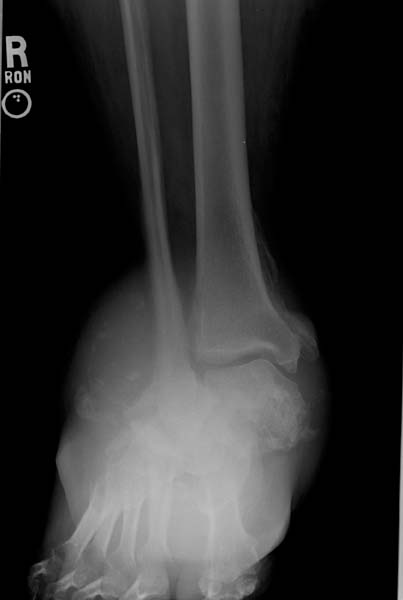Charcot joint
|
WikiDoc Resources for Charcot joint |
|
Articles |
|---|
|
Most recent articles on Charcot joint Most cited articles on Charcot joint |
|
Media |
|
Powerpoint slides on Charcot joint |
|
Evidence Based Medicine |
|
Clinical Trials |
|
Ongoing Trials on Charcot joint at Clinical Trials.gov Trial results on Charcot joint Clinical Trials on Charcot joint at Google
|
|
Guidelines / Policies / Govt |
|
US National Guidelines Clearinghouse on Charcot joint NICE Guidance on Charcot joint
|
|
Books |
|
News |
|
Commentary |
|
Definitions |
|
Patient Resources / Community |
|
Patient resources on Charcot joint Discussion groups on Charcot joint Patient Handouts on Charcot joint Directions to Hospitals Treating Charcot joint Risk calculators and risk factors for Charcot joint
|
|
Healthcare Provider Resources |
|
Causes & Risk Factors for Charcot joint |
|
Continuing Medical Education (CME) |
|
International |
|
|
|
Business |
|
Experimental / Informatics |
Editor-In-Chief: C. Michael Gibson, M.S., M.D. [1]
Overview
Bone and joint changes secondary to loss of sensation, as first described by Charcot in 1868. There are 2 major theories regarding the neuropathic joint.
Pathophysiology
- Neurotramatic theory: the loss of normal proprioception and sensation leads to recurrent trauma, resulting in joint destruction and degeneration. Continued walking on an insensitive joint results in instability and degeneration, sublaxation, and destruction.
- Neurovascular theory: neurally mediated reflex hyperemia causes osteoclastic bone resorption.
- Characteristic associations:
- 5-15% of patients with diabetes and 20-25% of patients with syringomyelia have Charcot joint.
- Shoulder - Syringomyelia
- Hip – Syphilis and Spinal dysraphism
- Knee – Syphilis and Diabetes
- Foot and ankle – Diabetes
- Spine – Spinal dysraphism
Causes
- Common causes include diabetes, steroids, alcoholism, trauma, infection, amyloid, tabes dorsalis, syringomyelia, multiple sclerosis, spinal cord compression/malformations, Charcot-Marie-Tooth disease, and connective tissue diseases.
- Hypertrophic changes are caused by upper motor neuron lesions while atrophic changes are due to peripheral nerve injuries.
Diagnosis
The imaging findings are as follows:
Plain films are typically sufficient to diagnose Charcot joint, but MR or nuclear medicine studies may be used to exclude septic arthritis.
Neuropathic joints usually follow one of these characteristic forms, or a combination of the 2:
- The hypertrophic joint: joint destruction and fragmentation, osseous sclerosis, and osteophyte formation, similar in appearance to osteoarthritis.
- The atrophic joint: osseous resorption, similar in appearance to surgical amputation or infection.
Radiographic findings in the early stage:
- Joint effusion
- Joint space narrowing
- Soft tissue calcification
- Minimal subluxation
- Preservation of bone density (unless infected)
Radiographic findings in the late stage (i.e. The 6 Ds)
- Increased Density (Subchondral sclerosis)
- Destruction
- Debris (Intra-articular loose bodies)
- Dislocation
- Distention
- Disorganization
Upper extremity changes are less common than weight bearing joints, and are typically due to a syrinx.
MRI can demonstrate soft tissue edema, dislocation, destruction, marrow edema, effusion, and loss of bone definition.


